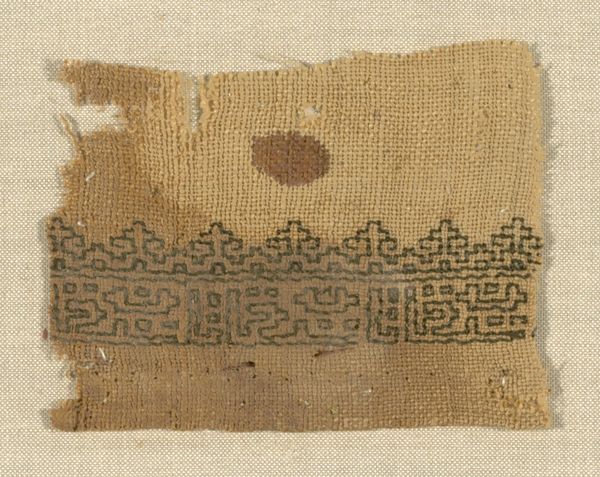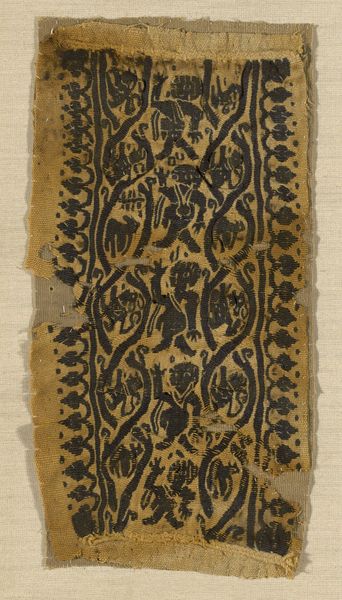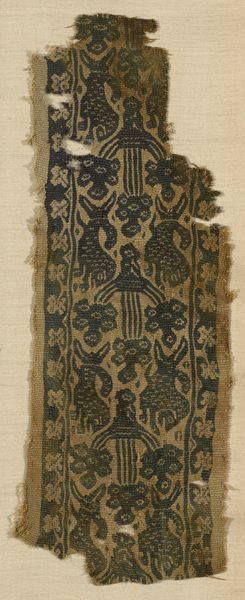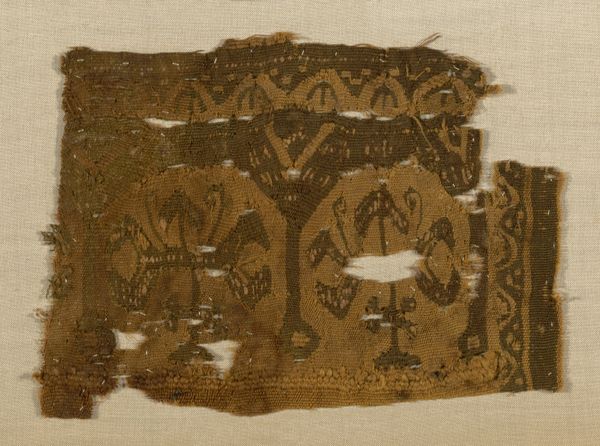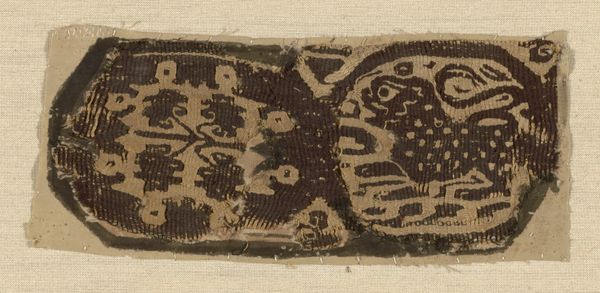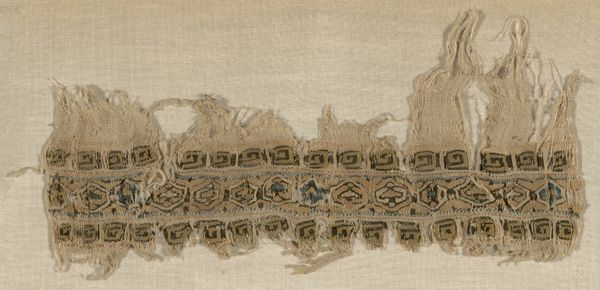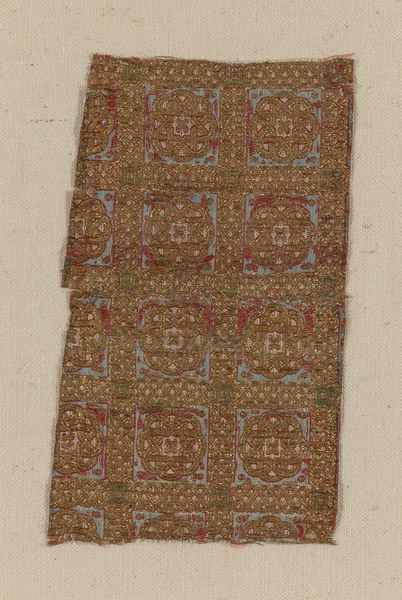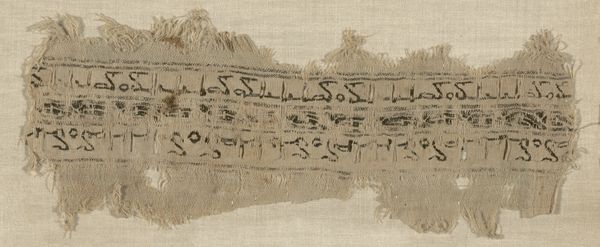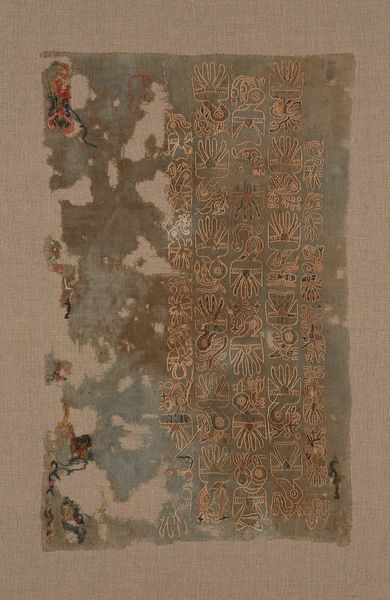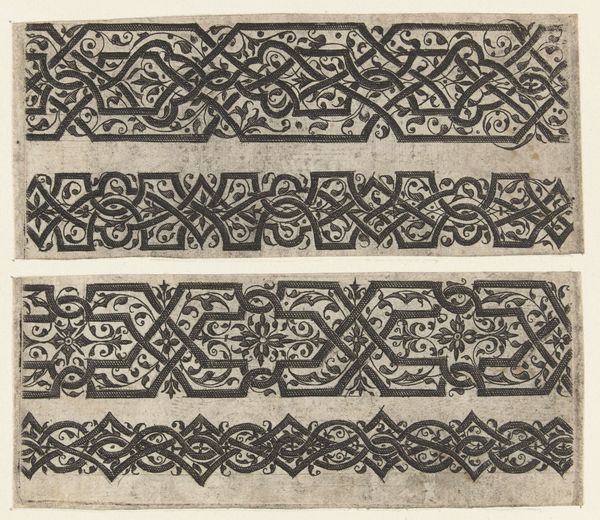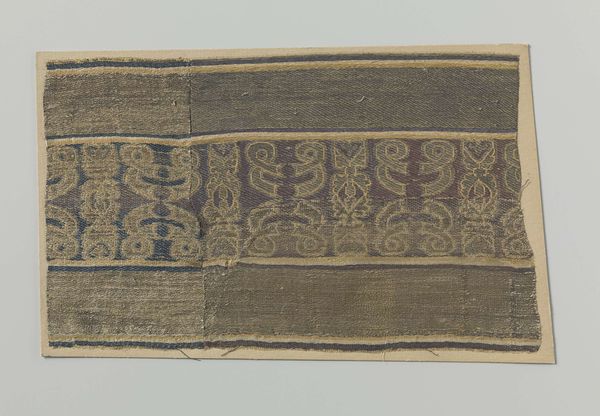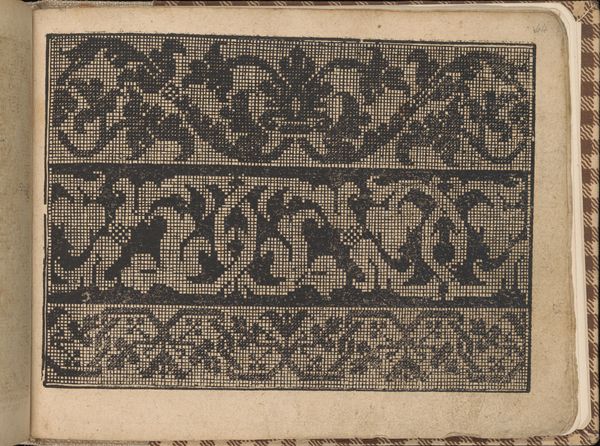
fibre-art, weaving, textile
#
fibre-art
#
medieval
#
weaving
#
textile
#
islamic-art
Dimensions: 7.6 × 15.2 cm (3 × 6 in.)
Copyright: Public Domain
Curator: The work before us, titled "Borders," is a textile fragment currently residing here at The Art Institute of Chicago. The dating is somewhat broad, placing its creation sometime between 969 and 1171, possibly originating from an Islamic context during the medieval period. Editor: It has an air of quiet dignity despite its fragmentary state, doesn't it? The weaving seems very meticulous. I'm drawn to the contrast between the worn, almost distressed fabric and the controlled geometric patterns. You can tell someone really poured over the work by the repetition alone. Curator: Indeed. The survival of such textiles offers a unique window into the societal values of the time. We can speculate about the function and social status embedded in the material, and who it served or empowered. Consider, what was the socio-economic strata of people producing these? Editor: Exactly. Look at the weave, it is beautiful! What materials were they using for dyeing? Was it a precious dye that needed to be imported? The colors suggest plant-based sources, perhaps woad for the blue? How did they teach textile design? Was it passed down through generations of artisans or connected to any workshop guild lines? I wonder. Curator: These questions allow us to begin contextualizing these objects and give them a renewed social life. We also might ask who acquired the piece and how it eventually entered the museum's collection. Such aspects frame this seemingly simple object within layers of acquisition and display policies that shape how the public now sees Islamic art from the medieval era. Editor: Absolutely. I'm intrigued by the geometry of the work: repetition of form to construct abstract shapes. Each strip is made out of an alternating pattern that resembles flowers enclosed by waves, then calligraphy. Curator: A lovely observation, which reveals the interesting fusion in Islamic art between ornamentation, script, and abstraction, perhaps reflecting philosophical perspectives. Editor: In summary, "Borders" offers an invitation to explore artistic making in medieval Islamic civilization. Curator: Indeed. Thank you, I would only add the power relations inscribed in these material remnants and their implications.
Comments
No comments
Be the first to comment and join the conversation on the ultimate creative platform.
